
Tobacco pipes have evolved much over the last few centuries. Virginia’s reliance on tobacco farming made tobacco pipes emblematic of the region’s cultural identity. Here are a few examples from my collection that help give insight into the world of historical pipes.
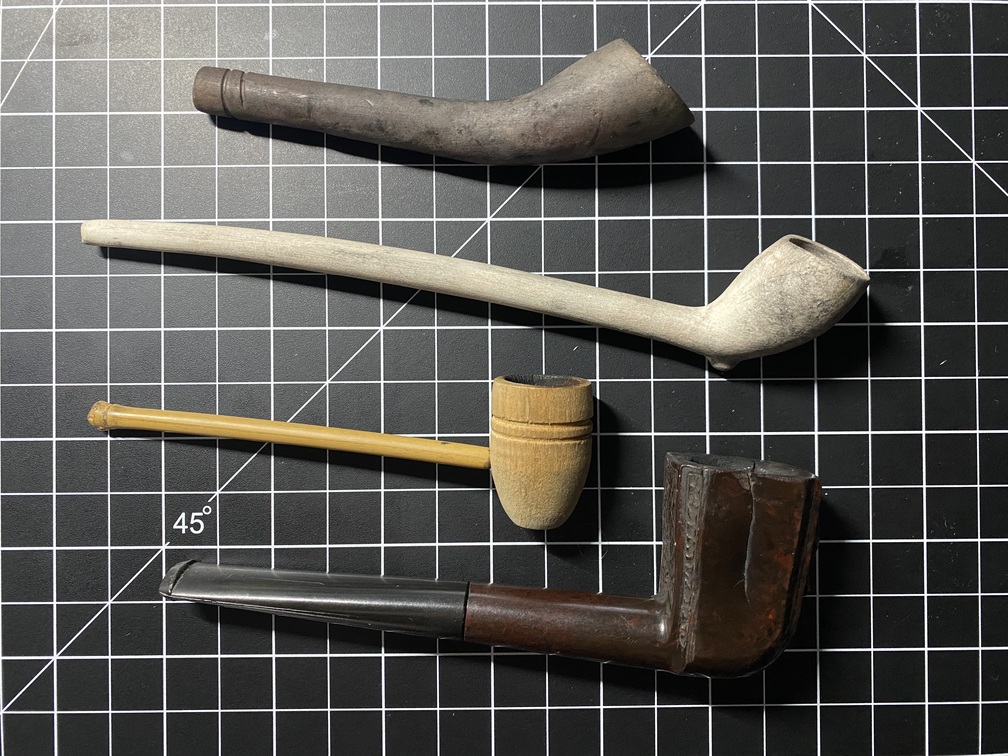

During the 1600’s and 1700’s, many tobacco pipes were handmade from the local Virginia clay. These are now known as “Chesapeake pipes” which were various shades of red or brown clay instead of white. This one is a good reproduction, shaped by hand, about 4.5in long.
The stem bore is visible as well as a simple spiral motif at the mouthpiece.


Virginians also commonly imported white ball clay pipes from England. They were made in molds of various lengths and designs. This clay pipe is about 7in long with a curved stem, which was very common during the 18th century. It is a simple reproduction, but others were designed with decorative patterns and motifs.
The underside of the pipe bowl often featured a protruding shape known as a spur. When resting the pipe on a surface, the spur served as a barrier to reduce heat damage to the surface.


These are examples of 18th and 19th century pipe stems with various design features. At the top/left, this large mouthpiece resembles an architectural column with a fluted design. The stem in the middle has very intricate patterns shaped into more than half of the length of the fragment. At the bottom, this mouthpiece was formed in a mold with a considerable downward curve, opposed to the other four which are all straight stems.
These three pipe bowls display a variety of design choices. The top-left has a fluted texture and a rounded spur. Some spurs were made flatter and wider for better balance, but others were narrow and pointed like the top-right example. This elongated bowl shape was common in the 18th century. The bottom example has knotty protrusions from the bowl, which likely also helped when resting the pipe on a surface.

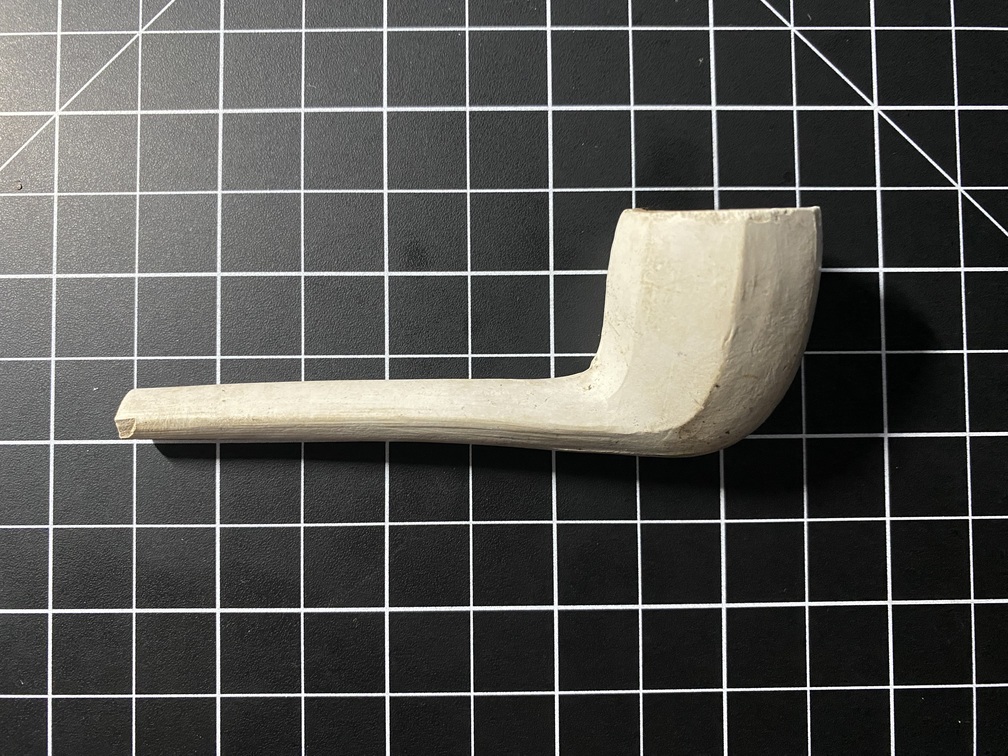
A pipe is not always lost when the stem breaks. Many times with a longer pipe the stem could get stopped up near the mouthpiece, so the person would break off a bit and keep using the pipe. That is also why many short stem fragments are commonly found during archaeology digs. This one is from the 19th century.
This is a simple pipe, about 4in long, made of a simple turned wood bowl and a reed stem. A pipe of this style could have been made during the late 19th or early 20th centuries.
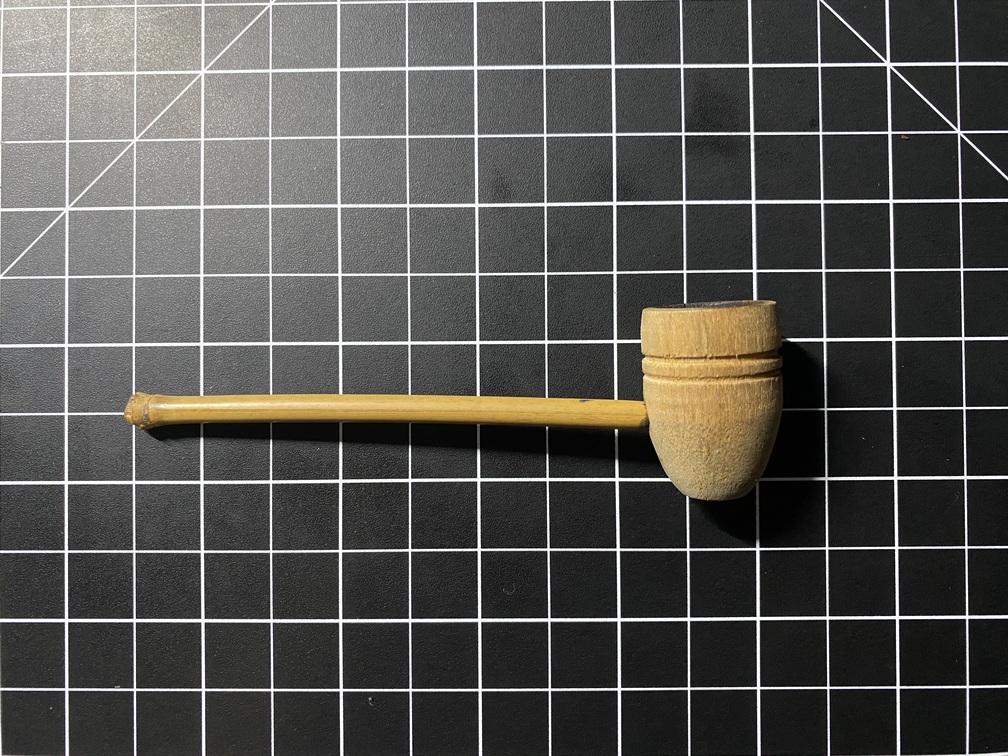

The reed stem is very thin and easily detaches from the pipe bowl. The interior is black with remnants of its last use many years ago.
This wooden tobacco pipe is about 5.5in long with a 2.5in mouthpiece. The wood is heavy and dark in color with blotches of redness. It was likely made during the early decades of the 20th century.
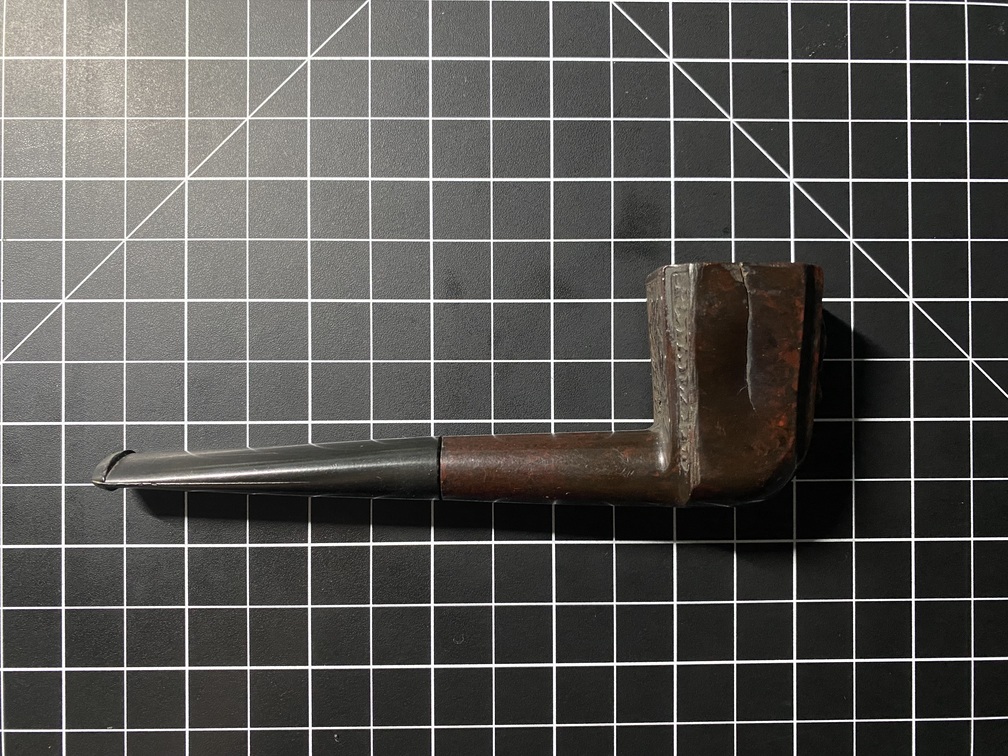
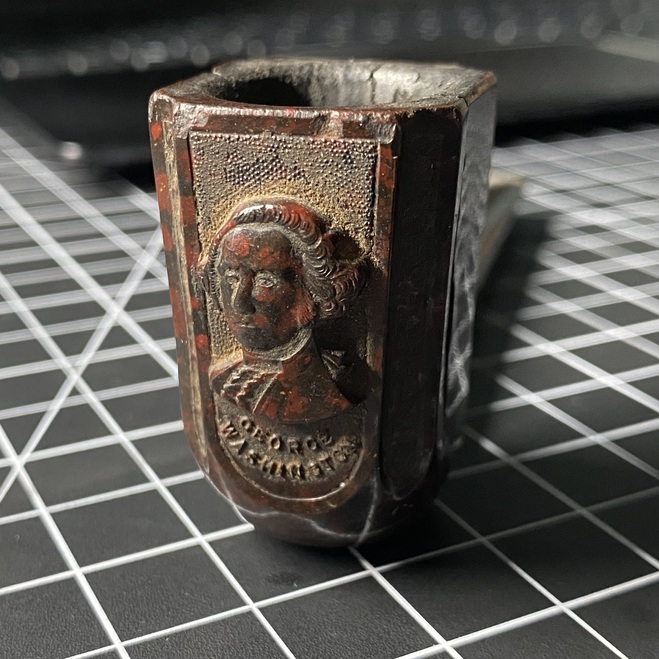
The front of the pipe depicts a likeness of the first president of the United States, George Washington of Virginia.
